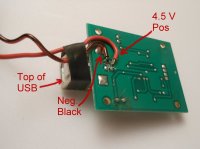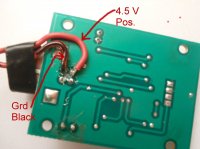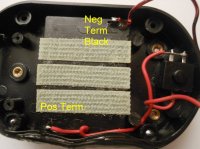- Joined
- Nov 27, 2010
- Messages
- 5,211
- Reaction score
- 5,116
- Points
- 373
- Location
- Copenhagen Denmark
- Printer Model
- Canon MP990
That's strange. A lower voltage should do no harm, unless it was applied to some wrong point. How or at what points did you apply the battery voltage? I should have pointed out that the voltage across C2 should be verified to be around 3.2 V before proceeding with further tests. Sorry for that omission!
3 V from 2 series connected AA or AAA alkaline cells could also be applied directly to C2. Observe polarity, wrong polarity can cause a short circuit. The positive terminal of the capacitor is marked with a plus sign on the circuit board. On the capacitor the minus terminal is most likely marked with a black band with minus signs. The battery box for 2 AA or AAA cells should also be with a switch, or leakage current in C2 could drain the batteries.
You could try this modification on the other resetter, but do no other testing than verifying voltage and polarity across C2 and that the start-up sequence is indicated on the LED, when pressing the button. Don't risk any more chips.
3 V from 2 series connected AA or AAA alkaline cells could also be applied directly to C2. Observe polarity, wrong polarity can cause a short circuit. The positive terminal of the capacitor is marked with a plus sign on the circuit board. On the capacitor the minus terminal is most likely marked with a black band with minus signs. The battery box for 2 AA or AAA cells should also be with a switch, or leakage current in C2 could drain the batteries.
You could try this modification on the other resetter, but do no other testing than verifying voltage and polarity across C2 and that the start-up sequence is indicated on the LED, when pressing the button. Don't risk any more chips.
Last edited:



